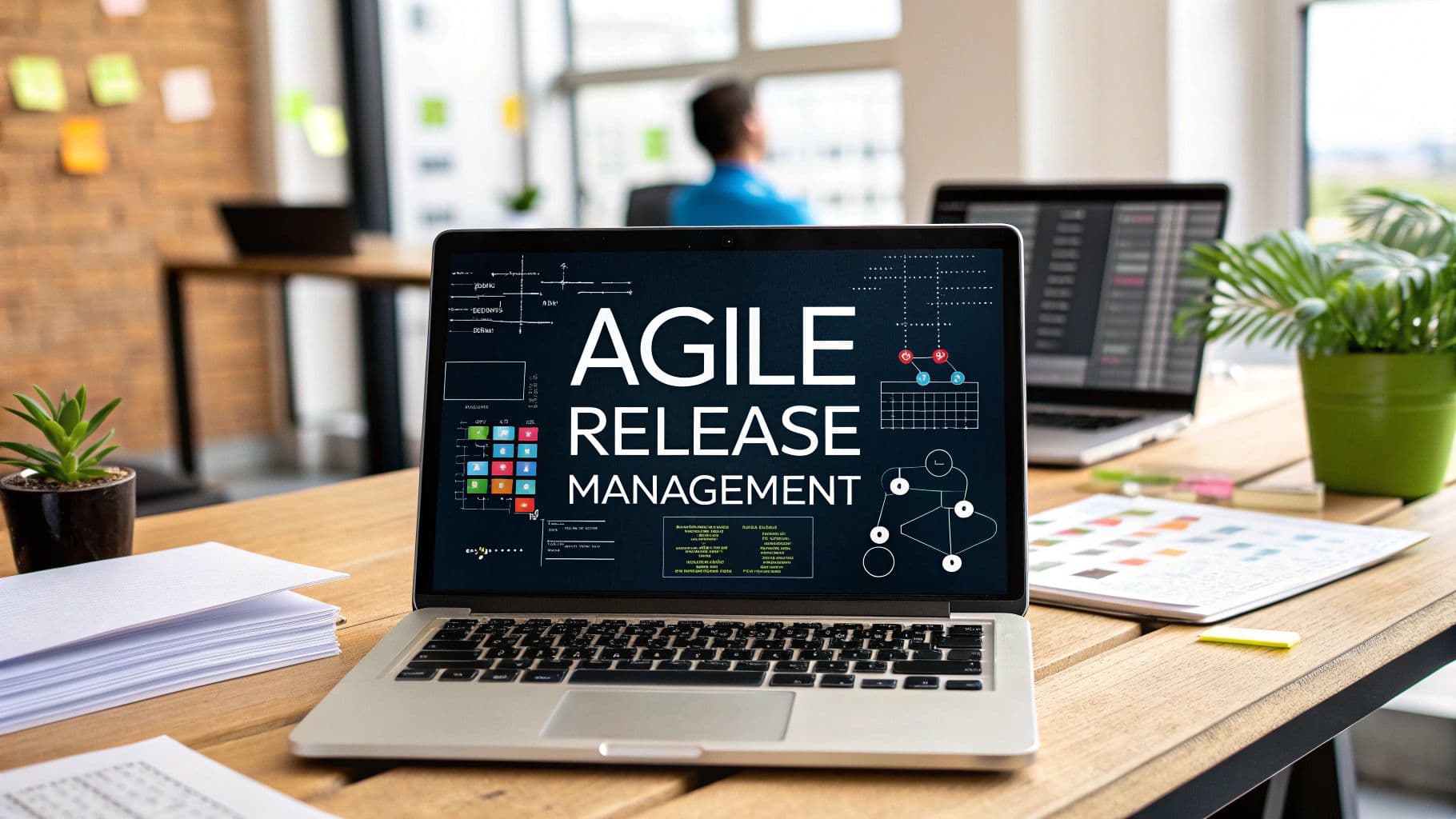static website SEO
technical optimization
page speed
content strategy
search rankings
Boost Your Static Website SEO: Proven Strategies for Higher Rankings
Why Static Websites Can Outrank Dynamic Competitors
Static websites sometimes get an unfair reputation in the SEO world. Many assume they lack the flexibility of content-heavy, database-driven sites. However, this isn't always true. Static websites, with proper optimization, can not only compete but often outrank their dynamic counterparts. This is due to the inherent advantages of static sites regarding speed, security, and crawlability.
Static websites are inherently faster because they serve pre-built HTML files. This bypasses server-side processing, leading to significantly faster load times. This speed boost is a crucial ranking factor, as search engines like Google prioritize user experience. A slow-loading website can cause higher bounce rates and lower search rankings.
Additionally, static websites offer enhanced security. With fewer moving parts and no database to target, they present a smaller attack surface for hackers. This improved security is valued by search engines. They are more likely to rank secure sites higher, rewarding owners who prioritize user safety. This translates to better visibility and increased organic traffic.
This simpler structure means search engine crawlers can easily access and index the content. Clean code and simple architecture make it easier for search engines to understand the site's structure and content, which contributes to better rankings. This improved crawlability ensures your valuable content is discovered and indexed, maximizing SEO potential.
Modern Static Site Generators and SEO
Modern static site generators, such as Gatsby, Hugo, and Jekyll, offer advanced SEO features. These tools allow website owners to easily implement best practices like optimized meta tags, structured data, and XML sitemaps. This empowers owners to fine-tune their static sites for maximum search visibility.
One compelling finding about static websites and SEO is that despite assumptions about less dynamic content, they can still achieve high rankings with proper optimization. As of 2025, over 94% of clicks on search engine results pages (SERPs) go to organic results, not paid ads. This means a huge opportunity for static sites to drive valuable, free traffic through SEO best practices. Explore this topic further here. This highlights the potential of static websites to capture organic traffic through effective SEO. The combination of speed, security, and crawlability provides a strong foundation for achieving top rankings.
Technical Foundations: Building Static Sites Search Engines Love

Static websites offer a strong base for excellent SEO. This comes from their inherent simplicity and speed. However, to truly unlock their full potential, understanding key technical optimizations is essential. These optimizations ensure search engines can effectively understand and rank your content. This includes focusing on areas like clean HTML, strategic header tag usage, and XML sitemaps.
Structuring For Success: HTML and Header Tags
A well-organized HTML structure is the backbone of any successful static website. It's the blueprint that guides search engine crawlers through your content. This structure needs to be logical and semantic. Use appropriate HTML5 tags to define different sections of your website. For example, use <article> tags to enclose main content and <aside> tags for supplementary information. This clarity helps search engines understand the context and hierarchy of your information, improving your static website SEO.
Using header tags (H1-H6) strategically is also vital for both users and search engines. These tags signal the importance of different content sections. Your H1 should clearly state the main topic of the page. Subsequent headers (H2-H6) should then break down the content into logical subsections. Proper header tag usage improves readability and search engine comprehension.
Navigating Static Sites: URL Structure and XML Sitemaps
Search-friendly URL structures are essential for static websites. Short, descriptive URLs with relevant keywords are best. Avoid dynamic parameters or long, complex strings that can confuse users and search engines. A well-structured URL guides visitors and crawlers directly to the right content. This is a cornerstone of static website SEO.
An XML sitemap is a roadmap for search engines, listing all the important pages on your static website. This helps search engines discover and index your content efficiently, especially for larger static websites. It's like providing search engines with a complete index of your website's content.
The following table summarizes some key technical SEO considerations for static websites. It provides a quick overview of the implementation difficulty, SEO impact, and priority level for each factor.
Technical SEO Checklist for Static Websites A comprehensive checklist of technical optimizations specifically for static websites
| Optimization Factor | Implementation Difficulty | SEO Impact | Priority Level |
|---|---|---|---|
| Clean HTML Structure | Easy | High | High |
| Strategic Header Tag Usage | Easy | Medium | High |
| Search-Friendly URL Structure | Easy | High | High |
| XML Sitemap | Easy | Medium | High |
| Structured Data Markup | Medium | High | Medium |
| Mobile Optimization | Medium | High | High |
This table highlights the importance of addressing fundamental elements like HTML structure and URL formatting. While slightly more complex, structured data and mobile optimization are crucial for maximizing visibility and user experience.
Enhancing Visibility: Structured Data and Mobile Optimization
Implementing structured data using schema markup helps search engines understand your page content better. This can lead to rich snippets in search results, which makes your content more engaging for users. It's like providing labels for your content with specific details. This enhances search engine understanding and can improve static website SEO. You might be interested in: How to master Next.js SEO.
Finally, ensuring your static website is mobile-friendly is critical. With most internet traffic coming from mobile devices, a responsive design is essential. This means your website should adapt to different screen sizes, providing a consistent user experience. A mobile-friendly site is more likely to rank well in mobile search results.
Crafting Content That Ranks Without Constant Updates
Static websites require a different content strategy than dynamic sites, but this doesn't mean sacrificing search engine rankings. Dynamic sites can frequently publish new content, while static sites depend on evergreen content—content that stays relevant and valuable over time. This requires a strategic approach to keyword research, content structure, and the depth of information provided.
Keyword Research for Evergreen Topics
Successful static site owners know the importance of targeting keywords that won't become outdated. Instead of focusing on short-lived trends, they concentrate on evergreen topics within their niche. For example, a static site about baking might target "best chocolate chip cookie recipe" instead of "trending holiday desserts". This ensures the content continues attracting traffic long after publication, maximizing the return on investment for content creation.
Content Hierarchies and Internal Linking
Strategic content structuring is essential for static website SEO. Creating a logical content hierarchy with clear parent and child pages allows for effective internal linking. This helps search engines understand your site's structure and keeps visitors engaged by presenting related content. Think of it like a well-organized library: each book (page) has a category and connects to related books, making it easy for visitors to find information. This strengthens the overall site architecture, a key ranking factor for search engines. For more information, learn more in our article about SEO for static websites.
Creating In-Depth Resource Pages
Developing detailed resource pages is a powerful technique for static websites. These pages act as central hubs of information on specific topics, naturally attracting links. By offering valuable, in-depth content, you position your static site as an authority in your niche. This attracts visitors and backlinks, boosting your search rankings. Ensuring your static site follows SEO best practices is also crucial.
Balancing Keyword Optimization and Readability
While keyword optimization is important, prioritizing readability is equally vital. Content should be engaging and easy to understand, keeping bounce rates low and time-on-page metrics high. These user engagement signals demonstrate to search engines that your content is valuable and relevant. Google processes an estimated 99,000+ searches every second globally. Ranking high provides significant visibility, even for the simplest static sites. The key is high-quality, relevant, and well-structured content. For example, content over 3,000 words generates 3x more traffic and 4x more shares than average-length content of 1,400 words. This proves that depth and quality are essential regardless of whether a site is static or dynamic. More detailed statistics can be found here. Creating content that satisfies both search engines and users builds a sustainable strategy for long-term ranking success for your static website.

Speed Optimization: Turning Static Sites Into Performance Powerhouses
Page speed is a critical factor in static website SEO. Static sites, with their pre-built HTML files, have a built-in speed advantage because they avoid server-side processing. But this inherent speed can be amplified for even stronger search rankings. This means focusing on key performance metrics and implementing best practices for images, JavaScript, and content delivery.
Core Web Vitals and Static Sites
Core Web Vitals are user-centric metrics that directly influence search rankings. They consist of Largest Contentful Paint (LCP), First Input Delay (FID), and Cumulative Layout Shift (CLS). Optimizing these for static sites often involves minimizing render-blocking resources, optimizing images, and making sure JavaScript executes efficiently. For instance, using the right image formats and sizes can significantly boost LCP.
Image Optimization: Balancing Quality and Speed
Images are usually the heaviest files on a web page. Optimizing them is crucial for speed. This involves compressing images without compromising visual appeal. Using modern image formats like WebP offers superior compression. Furthermore, using responsive images means serving appropriately sized images for different devices, enhancing LCP and page load times.
JavaScript: Enhancing Functionality Without Bloat
While JavaScript brings interactivity, it can slow a site down. For static sites, minimizing JavaScript is key. Use only what’s essential and optimize its delivery. Techniques like deferring and asynchronously loading JavaScript can dramatically improve FID, enabling quicker user interaction.
To illustrate the positive effects of optimization, let's take a look at the following table. It showcases how strategic improvements can significantly impact static website performance and, consequently, SEO.
Static vs. Dynamic Website Performance Metrics
Comparative analysis of performance metrics between static and dynamic websites and their SEO implications
| Performance Metric | Static Website | Dynamic Website | SEO Impact |
|---|---|---|---|
| Time to First Byte (TTFB) | Can be very low with optimization | Can be higher due to server-side processing | Faster TTFB improves ranking |
| Number of Indexed Pages | High with proper optimization | Can be lower if crawling is hindered by dynamic elements | More indexed pages increase visibility |
| Crawl Error Count | Low with optimized structure and links | Can be higher with complex routing and server errors | Fewer crawl errors improve indexation |
As the table highlights, optimized static websites often achieve lower TTFB, higher numbers of indexed pages, and fewer crawl errors, all of which contribute to stronger SEO performance.
This infographic visually represents the impact of optimization techniques on key performance indicators for static sites. The chart compares Time to First Byte, Number of Indexed Pages, and Crawl Error Count before and after implementing these strategies.

As this infographic shows, optimizing a static website significantly reduces Time to First Byte, increases the Number of Indexed Pages, and lowers Crawl Error Count, leading to a substantial SEO boost. These improvements combined result in faster page loads, better crawlability, and ultimately higher search rankings. For those interested in broader performance enhancements, check out our guide on database performance optimization.
CDN Implementation: Delivering Global Performance
Content Delivery Networks (CDNs) are vital for speedy content delivery worldwide. They cache static assets on servers closer to users, reducing latency. This is especially helpful for static websites since their content is relatively stable. Implementing a CDN can drastically improve LCP for global users, enhancing search visibility across different regions. By improving load times, CDNs boost user experience and signal to search engines that a site is both fast and reliable, which helps static website SEO and boosts search rankings.
Tools and Platforms That Supercharge Static Website SEO
Optimizing a static website for search engines requires a different approach than with dynamic sites. Picking the right tools and platforms can significantly improve your static website SEO. Choosing wisely can make a substantial difference, both in your workflow and your results. Let's explore some key categories and the specific platforms that can give your site a boost.
Static Site Generators: The Foundation of SEO-Friendly Sites
Static site generators (SSGs) are essential for modern static website development. They come with significant SEO advantages baked in. Popular SSGs like Gatsby, Hugo, and Jekyll are built with performance and SEO in mind.
- Gatsby: Known for its speed and integration with React, Gatsby has plugins specifically designed for SEO. These include helpful features for generating sitemaps and optimizing images.
- Hugo: Hugo is renowned for its blazing-fast build times and the flexibility it provides with theming options. These factors are crucial for optimizing Core Web Vitals.
- Jekyll: A favorite among many developers, Jekyll is highly customizable and boasts a large selection of plugins to enhance various aspects of SEO. These range from metadata management to implementing schema markup.
These SSGs form a strong foundation for a search-engine-friendly static website. They simplify many technical SEO aspects, freeing you to concentrate more on content and overall SEO strategy.
Plugins: Extending SEO Capabilities
While SSGs offer a great starting point, specialized plugins can further enhance your static website’s SEO. These plugins address specific needs like schema markup implementation, XML sitemap generation, and metadata optimization.
- Schema Markup Plugins: These help search engines better understand your content by adding structured data to your HTML. This addition can result in rich snippets showing up in search results, ultimately boosting click-through rates.
- XML Sitemap Plugins: An XML sitemap helps search engines easily find and index all of your webpages. These plugins automate the process of creating and updating your sitemap, so you don't have to.
- Metadata Optimization Plugins: Managing meta descriptions and title tags is easier with the help of these plugins. They simplify the process of optimizing for your target keywords.
These plugins take the functionality of your SSG further and add a more detailed layer to your SEO approach. They assist you in addressing important aspects of technical SEO and content optimization.
Analytics and Monitoring Tools: Data-Driven Insights
For continued SEO success, it's crucial to understand how users interact with your static site. Analytics platforms give you key insights into user behavior, which helps you refine your approach. This means integrating platforms like Google Analytics and Google Search Console.
- Google Analytics: Google Analytics tracks user behavior and gives you data on page views, bounce rates, and time spent on each page. Use this data to improve your content strategy and identify areas for improvement.
- Google Search Console: Google Search Console gives you information on how Google sees your site, showing you things like crawl errors, indexing status, and the search queries bringing users to your site. This is important for finding and fixing technical SEO issues and for understanding how users find your content.
Static sites that load quickly, are mobile-friendly, and offer authoritative content can certainly rank well for competitive keywords. Find more detailed statistics here: https://aioseo.com/seo-statistics/. For in-depth strategies on how to boost site performance, see this resource on Website Speed Optimisation. Using these tools strategically enables you to collect data-driven insights and make informed decisions to improve your static website SEO.
Beyond Your Site: Building Authority For Static Websites

Off-page SEO is essential for any website. However, static websites require a different approach. Unlike dynamic sites with frequent content updates, static sites must focus on quality over quantity for building authority. This involves attracting high-quality backlinks and establishing a strong online presence through strategic outreach and evergreen content.
Link Building Strategies For Static Websites
Attracting valuable backlinks is critical for static website SEO. A strong backlink profile tells search engines that your site is a trusted resource. The strategy differs from dynamic sites, which often rely on frequent content updates for link-building opportunities.
-
Resource-Based Link Acquisition: Create comprehensive resource pages filled with valuable information within your niche. These resources naturally attract backlinks from other websites looking for authoritative sources.
-
Content Partnerships: Work with other websites in your industry. Guest posting or joint ventures expand your reach and create opportunities for reciprocal linking, boosting your static website SEO.
-
Outreach and Promotion: Actively promote your high-quality evergreen content. Reach out to relevant websites and influencers. Personalized outreach is far more effective than generic requests when it comes to securing backlinks.
These strategies help build a strong backlink profile without constantly churning out new content. They focus on creating valuable, link-worthy content that stands the test of time.
Leveraging Social Signals and Third-Party Platforms
Static websites may not generate the same social media buzz as dynamic sites. However, effectively using social signals is still essential. Promoting your evergreen content on social media platforms increases visibility and drives referral traffic.
Leveraging third-party platforms also plays a key role in enhancing your domain authority. Consider these tactics:
-
Directory Submissions: List your static site in relevant online directories like Yahoo Directory and DMOZ (now curated by volunteers). This improves your site's visibility and can generate backlinks.
-
Community Engagement: Actively participate in online communities related to your niche. This builds brand awareness and establishes your website as a valuable resource within your industry.
-
Review Platforms: Encourage satisfied customers to leave reviews on platforms like Google My Business and Yelp. Positive reviews build trust and credibility, which can indirectly improve SEO.
These off-page activities complement link building, creating a stronger online presence for your static website. This comprehensive approach to off-page SEO strengthens your site's authority and search rankings.
Local SEO For Static Websites
For businesses with a physical location, local SEO is essential for visibility in local search results. Optimize your static website for local searches by:
-
Creating Location Pages: Develop dedicated pages targeting local keywords. Ensure consistent NAP (Name, Address, Phone Number) information across all platforms.
-
Claiming Local Listings: Register your static website with major online directories like Google My Business and Bing Places for Business. This allows you to accurately manage your local business information.
These local SEO strategies help attract customers searching for services and businesses in your area.
Monitoring and Maintaining Your Backlink Profile
Regularly monitor your backlink profile. Track both the quality and quantity of your backlinks. Use tools like Ahrefs, SEMrush, or Moz to identify potentially harmful backlinks that could negatively impact your search rankings. Consistent monitoring helps you maintain a healthy backlink profile, addressing any issues promptly. This proactive approach is crucial for building and preserving your static website’s authority and search engine performance.
Measuring Success: Analytics That Drive Static Site Rankings
After implementing various SEO strategies for your static website, measuring their effectiveness is crucial. This involves identifying Key Performance Indicators (KPIs), implementing analytics tools, and creating custom reporting dashboards. These steps are essential for understanding what strategies are successful, what needs improvement, and how to continuously refine your static website's SEO.
Identifying KPIs That Matter for Static Sites
Not all KPIs are equally important. For static websites, certain metrics carry more significance. Focus on the following key areas:
-
Organic Traffic: This measures the number of visitors arriving from search engine results pages (SERPs). An increase in organic traffic indicates your SEO efforts are attracting more potential customers.
-
Keyword Rankings: Track your position in SERPs for targeted keywords. Higher rankings mean increased visibility and a greater likelihood of organic clicks.
-
Bounce Rate: A high bounce rate (visitors leaving after viewing only one page) could signal problems with your site's content, navigation, or overall user experience. Optimizing for a low bounce rate is vital for static websites because it directly influences rankings.
-
Time on Page: This KPI reveals how long visitors stay on your pages. Longer durations suggest engaging content and a positive user experience, both of which contribute to better static website SEO.
-
Conversion Rate: This measures the percentage of visitors completing desired actions, such as filling out a contact form or making a purchase. A strong conversion rate demonstrates effective content and clear calls-to-action.
By monitoring these KPIs, you gain a clear understanding of your static site's SEO performance and can pinpoint areas for improvement.
Implementing Analytics Tools for Static Websites
Traditional analytics platforms like Google Analytics work well with dynamic websites but might require some adjustments for static sites. Because static sites lack server-side processing, you often need to configure your analytics platform to function with client-side rendering. This usually involves adding a JavaScript snippet to your site’s HTML. However, several analytics tools are designed specifically for static websites, offering easier integration and specialized reporting.
Developing Custom Reporting Dashboards
Custom dashboards provide an at-a-glance view of your most critical KPIs. Focus your dashboards on the metrics most relevant to your static website's SEO objectives. These may include organic traffic, keyword rankings, bounce rate, time on page, and conversion rates. Visualizing this data allows you to easily identify trends, spot opportunities, and address obstacles affecting your rankings.
A/B Testing Methodologies for Static Sites
A/B testing lets you compare different versions of a webpage to determine which performs best. While typically associated with dynamic sites, you can implement A/B testing on static websites using methods like client-side JavaScript and redirect rules. You could test different headline variations or call-to-action placements, for instance, to identify which drives more conversions.
Interpreting Search Console Data for Static Sites
Google Search Console provides invaluable data for understanding how Google crawls, indexes, and ranks your static website. Pay close attention to the following key aspects:
-
Crawl Stats: Identify any crawl errors or problems preventing Google from accessing your content.
-
Indexation Patterns: Ensure Google is indexing all essential pages on your static site. Address any indexing errors promptly.
-
Search Query Performance: Analyze the keywords driving traffic to your site. Use this data to refine your keyword targeting strategy.
By carefully analyzing Search Console data, you can identify and fix technical SEO problems and refine your content strategy to optimize performance.
Through diligent monitoring, analysis, and continuous improvement based on these insights, you can ensure your static website is effectively optimized for search engines, driving organic traffic and helping you achieve your online objectives. Start optimizing your static website today with AnotherWrapper. Learn how AnotherWrapper can enhance your static site’s SEO.
Fekri




